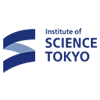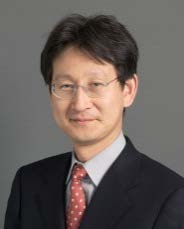
CLS
Laboratory for Chemistry and Life Science, Institute of Integrated Research, Institute of Science Tokyo
東京科学大学
総合研究院
化学生命科学研究所

LAST UPDATE 2017/02/26
-
研究者氏名
Researcher Name山元公寿 Kimihisa YAMAMOTO
教授 Professor -
所属
Affiliation東京科学大学 総合研究院 化学生命科学研究所
分子機能化学領域
Laboratory for Chemistry and Life Science, Institute of Integrated Research, Institute of Science Tokyo
Molecular functions -
研究キーワード
Research Keywords錯体化学
超分子化学
金属ナノ粒子
金属酸化物
Coordination chemistry
Supramolecular chemistry
Metal nanoparticle
Metallic oxide
- 研究テーマ
Research Subject -
精密ハイブリッドナノ材料の創製
Creation of Atom-hybrid Nano-materials
研究の背景 Background of the Research
巧妙な生命機能を司る金属タンパク質に代表される有機-金属ハイブリッドナノ材料は金属と有機物とで無限の組み合わせがあり、金属の特性と自在な設計が可能な有機骨格の特長を活かして多重機能の発現が期待されています。無機元素は110種類近く有りながら、未だに無機・金属を自在に組み立てる事が極めて困難な状況です。種類豊富な無機元素を原料に精密にナノ構造体を自在に組み上げる方法の確立が、未知の次世代ナノ材料の誕生に繋がる事は言うまでもありません。
Metal-organic hybrid nanomaterials have a limitless potential for synergistic functions like metalloproteins, because the organic frameworks have a significant diversity for design and synthesis and there are almost 110 inorganic elements as a substrates. However, we cannot yet freely assemble and hybridize their elements at the atomic level. The methodology for building finecontrolled nanostructures using the large variety of inorganic elements as raw materials will surely lead to the generation of yet unknown next-generation functional nano-materials.
研究の目標 Research Objective
革新的な機能材料を目指し、精密無機機能化学からのアプローチは次の重要なナノテクの戦略として強く望まれています。精密無機機能化学を基盤として新しい領域を拓くための新概念の創出を目指し、あわせて、環境、生体機能、エネルギー科学などに波及する革新的な機能を持つ未来ナノ材料の創製に挑戦しています。
The approach through "Advanced Inorganic Chemistry Based on Atomic-level Programming" is one of the most important general strategy for the next-generation nanotechnology. Our research aims to explore the methodology for the design and construction of fine-controlled hybrid materials through "Advanced Inorganic Chemistry Based on Atomic-level Programming", in which the chemical bonds and arrangements of metal atoms and ions are reversibly and precisely controlled. Our group is also striving to open up new field to create innovative future nano-materials, which will have an impact on the environmental, biomimetic, and energy sciences.
研究図Figures

論文発表 / Publications
Acc. Chem. Res., 47, 1127-1136 (2014). Nature Commun., 4, 2581 (2013). J. Am. Chem. Soc., 135, 13089-13095 (2013). Nature Chemistry, 1, 397-402 (2009). Nature Nanotechnology, 3, 106-111 (2008). J. Am. Chem. Soc., 129, 9256-9257 (2007). J. Am. Chem. Soc., 127, 13030-13038 (2005). Nature, 415, 509-511 (2002)
研究者連絡先 / HP
- yamamoto
 res.titech.ac.jp、yamamoto.k.fb62
res.titech.ac.jp、yamamoto.k.fb62 m.isct.ac.jp
m.isct.ac.jp - http://www.res.titech.ac.jp/~inorg/yamamoto/